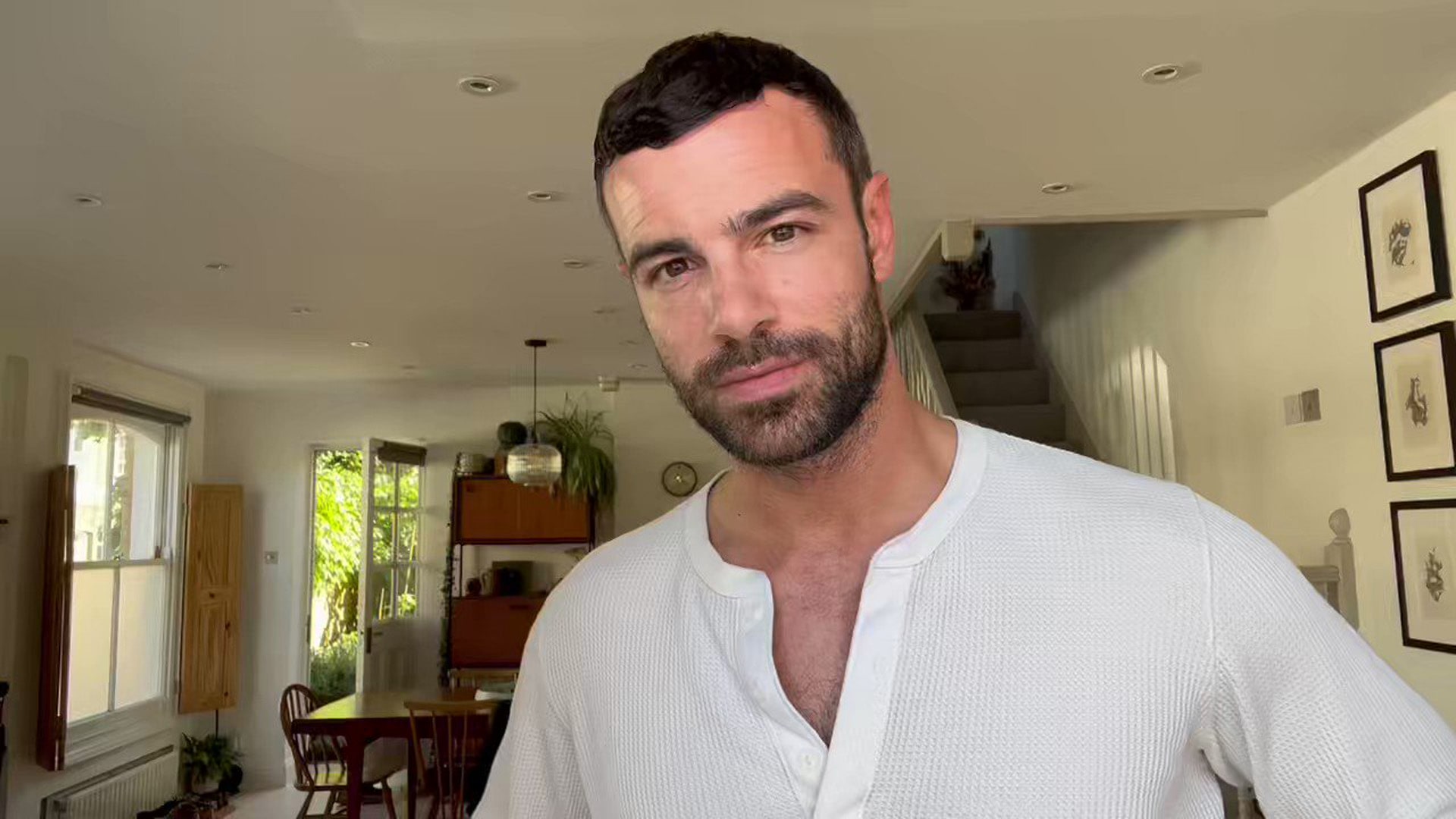How to Find and Hire the Best Voice Actors for Your Project
Finding the right voice actors can make or break your project. This article provides essential tips on locating and collaborating with voice talents who can authentically represent your narrative. Whether your needs are for animation, gaming, or corporate media, you’ll learn how to pinpoint professionals who can elevate your material and connect with your audience, plus key steps to forging successful partnerships in the voice acting industry.
Key Takeaways
- Voice acting is an expressive and skilled art form crucial for character development and storytelling in various media, and it requires continuous practice and strong industry connections.
- Finding proficient voice talent involves using online voice acting platforms for a diverse selection, evaluating voice samples to match the project’s style, and establishing a positive collaborative environment with clear communication and direction.
- Managing a voice acting career is a mix of creative expression and business acumen, involving portfolio development, strategic marketing, understanding of legal nuances, and setting competitive rates in a technologically evolving sector.
Disclaimer: The links provided herein are affiliate links. If you choose to use them, I may earn a commission from the platform owner, at no extra cost to you. This helps support my work and allows me to continue to provide valuable content. Thank you!
The Art of Voice Acting

Voice acting is an art form that transcends the traditional boundaries of acting. Professional voice actors breathe life into words, playing a critical role in engaging the audience with dynamic performances in films, video games, and commercials. Their performances add depth and immersiveness to animated characters, fostering a connection between the audience and the story. In many productions, their vocal performance is key to communicating the story to the audience, contributing significantly to characterizing off-stage, non-visible characters, and enhancing narrative engagement.
In essence, voice acting is a blend of talent, skill, and creative expression that takes storytelling to a new level.
The Role of a Voice Actor
Voice actors are more than just voices; they are storytellers, educators, and entertainers. They create characters, narrate stories, deliver information, and connect with audiences using only their vocal abilities. With the rise of audiobooks, online education, and mobile apps, the demand for voice actors has grown significantly, extending far beyond traditional media like movies and TV shows.
In this diverse landscape, voice actors must adapt to various genres, requiring unique skill sets and approaches for each project. From narrative diction for audiobooks to emotive sounds for video games, the versatility of a voice actor knows no bounds. And unlike visual actors, they cannot rely on physical expressions and must convey emotion and context solely through their voice. Thus, the role of a voice actor is indeed a challenging yet rewarding one, where every project brings a new opportunity to captivate and connect with the audience.
Building a Voice Acting Career
Building a career in voice acting requires more than just a knack for voices. It invites continuous learning, relentless practice, and a dash of entrepreneurship. Aspiring voice actors should seek formal acting training and enroll in voice acting courses. Breaking into character voice development and building a career in voice acting often involves transitioning from related fields, as exemplified by Troy Baker’s transition from radio commercials to voice-over work in anime.
Moreover, auditioning for various roles and creating strong connections with producers and directors are key steps in establishing a successful career. At the end of the day, the voice acting industry is about passion, persistence, and the pursuit of excellence, where every audition is a step closer to the spotlight.
Discovering Top Voice Talent

In a world where brand identity is king and audience engagement is queen, professional voice actors are the noble courtiers. By employing consistent and resonant voice-over styles, they forge a brand’s identity, resonating with the intended audience and leaving a lasting impression. Moreover, as our world becomes increasingly globalized, the demand for diverse vocal talents, including varying dialects and accents, continues to grow.
This diversity not only meets the needs of regional advertising but also feeds the ever-growing appetite for English-language education worldwide. Therefore, discovering top voice talent is not just about finding a pleasant voice; it’s about finding the right voice that can speak to your audience and tell your story.
Where to Find Professional Voice Actors
So, where do we find these voices that can bring words to life and connect with audiences? The answer lies in voice over marketplaces and talent agencies. Platforms like Voices and Voice123 offer a wide array of talent, providing:
- Ease of process
- Flexibility
- Niche voice selection
- Timesaving
Additionally, these platforms foster the growing accessibility for international talent by facilitating online profiles and auditions, eliminating the need for an agent.
In essence, voice acting websites and talent agencies provide a comprehensive and convenient solution for finding and hiring voice actors, catering to diverse project needs and global talent.
Evaluating Voice Samples
Once you’ve found potential voice actors, the next step is to evaluate their voice samples. Online platforms like Voices and Voice123 can quickly provide access to a variety of voice samples and actor profiles. These platforms allow you to review voice actors’ profiles and listen to samples, facilitating an informed assessment of their work.
In addition, creating a demo reel focused on a specific medium and genre helps voice actors to demonstrate their specialization and marketability. Ultimately, the best voice sample isn’t necessarily the most polished or professional; it’s the one that best matches the specific style and audience of your project.
Collaborating with Voice Artists

Building a successful project with voice actors requires more than just finding the right voice. It calls for collaboration based on respect, understanding, and open communication. Establishing a positive working environment can enhance creativity and collaboration with voice actors. Allowing voice actors to experiment and suggest alternative voices or interpretations can lead to enriched performances. Moreover, building rapport and trust with voice actors and sound designers is essential as their creativity and expertise significantly contribute to the storytelling aspect of the project.
Therefore, collaborating with voice artists is not just about directing their voices; it’s about creating a symphony of creativity and harmony.
Communicating Your Vision
The first step in collaborating with voice artists is to communicate your vision effectively. Providing voice actors with detailed briefs, including character descriptions and reference materials, helps them understand project requirements and deliver authentic performances. Regular and effective communication with voice actors is important to establish rapport and ensure clarity in conveying the project’s vision.
Moreover, creating a detailed backstory for a character can give depth to the voice acting performance, as personal history and motivations influence the authenticity of the portrayal. Thus, communicating your vision is a crucial component of the collaborative process, laying the foundation for a successful voice acting project.
Directing and Feedback

Directing voice artists goes beyond just telling them what to do. It involves guiding them effectively by preparing scripts in advance, providing clear direction for line delivery, and avoiding technical issues during recordings. Utilizing detailed storyboards, rough sketches, color schemes, and mood boards helps ensure that voice actors share the project’s vision clearly. Feedback from the voice and sound team in the early stages, such as the storyboarding phase, can lead to new ideas and improvements in the project.
Regular check-ins and open dialogue with the voice actors support maintaining project alignment and eliciting their best performances. Therefore, directing and feedback are not just about correcting mistakes; they’re about guiding the voice actors to give their best performance.
Voices Behind the Characters

Behind every memorable character, there’s a voice actor who brought them to life. Renowned voice actors like Troy Baker and Nolan North have left their mark on the voice acting industry through their remarkable contributions. Their performances in acclaimed video games such as ‘The Last of Us’ and ‘Uncharted,’ respectively, have set high standards for character portrayal and had a significant influence on the field.
Thus, it’s not just the voices we hear; it’s the talent, emotion, and dedication of the best voice actor that truly bring characters to life.
Trailblazers in Voice Work

Trailblazing voice actors have carved a path in the gaming industry, setting benchmarks with their iconic roles and showcasing their unique talents. Some of these trailblazers include:
- Anna Demetriou
- Charlotte McBurney
- Bryan Dechart
- Troy Baker
- Ashley Johnson
- Merle Dandridge
- Nolan North
- Christopher Judge
- Suzie Yeung
- John Eric Bentley
- David Hayter
These artists have become globally recognized for the unique traits and emotions they bring to characters. They have not only contributed to the growth of the industry but have also inspired other voice actors to explore their potential and push the boundaries of their craft.
The Journey of a Character's Voice

The journey of a character’s voice in animated films is a journey of creativity, exploration, and refinement. Voice actors play a critical role in humanizing animated characters by infusing personality into their performances. They craft unique voices for their characters by experimenting with vocal ranges and inflections, and using physical gestures during performances, often drawing inspiration from real-world voices.
Maintaining voice consistency and being receptive to feedback are essential to ensuring their characters remain engaging and believable. Therefore, the journey of a character’s voice is a testament to the creativity, versatility, and dedication of the voice actor behind it.
Voice Acting Across the Globe

Voice acting is a universal language that transcends borders and cultures. Around the world, the demand for voice acting features a broad range of dialects and accents, with a noted increase in the need for Australian-accented English. The popularity of voice acting has surged globally over the last decade, asserting its vital role in the international entertainment arena.
The international voiceover market offers unique opportunities and challenges, as it enables voice actors to:
- Contribute to worldwide projects from their local studios
- Connect with diverse audiences and cultures
- Tell stories that resonate with people from different backgrounds
Therefore, voice acting is not just about the voices we hear; it’s about the stories they tell and the cultures they represent.
Voice Acting in Different Cultures
Culture plays a significant role in shaping the voice acting industry. The increased popularity of anime in the West has been accompanied by English dubs that are often modified to better suit American cultural preferences. Voice actors from English-speaking and Japanese backgrounds are gaining fame within fan communities due to their performances in widely celebrated anime series and video games.
On the other hand, Chinese and Korean video game companies are becoming more influential in Western markets, although their original voice-over work is less recognized compared to established English and Japanese versions. Thus, cultural trends and preferences significantly influence the demand for diverse voice acting talent.
International Talent and Projects
The global reach of voice acting is evident in international collaboration and multilingual voice packs. Projects like the Chinese game Genshin Impact are testaments to international collaboration, where multilingual voice packs demonstrate the universal nature of voice work. In this global landscape, voice actors can lend their voices to characters from different cultures and languages, expanding their repertoire and connecting with audiences worldwide.
Therefore, international collaboration in voice acting not only enriches the industry but also fosters cultural exchange and understanding.
Technology and Voice Acting
The rapid growth of technology has left no industry untouched, and voice acting is no exception. The AI Voice Generator Market is projected to reach USD 4,889 million by 2032, showcasing a rapid growth in using AI for voice acting. However, the rise of AI voice tools presents both opportunities and challenges for voice actors. It brings up ethical considerations focused on issues of transparency, authenticity, and respecting intellectual property rights.
As we navigate this digital frontier, it’s important to strike a balance between leveraging technology and preserving the authenticity and emotional connection that only human voices can provide, ensuring the freedom to express ourselves genuinely.
Advances in Voice Synthesis
Advancements in voice synthesis technology have opened up new horizons for voice actors. AI voice tools like Respeecher enable voice actors to portray characters with varying ages, genders, and accents more accurately, expand their capabilities in the voice acting realm, and access a multitude of digital voices in different languages and accents through the Respeecher Voice Marketplace.
These tools and resources support their performance versatility.
Technologies such as text-to-speech conversion, accent generators, and voice changers empower actors to explore diverse roles and vocal styles beyond their natural voice. Despite these advancements, there remains a strong preference for the genuine human voice over synthetic voices such as Alexa or Siri, owing to the emotional connection that human voices are better able to establish.
The Importance of Professional Equipment
While technology has made voice acting more accessible, it’s not just about having a good voice and a microphone. High-quality audio and professional equipment are crucial for voice actors to produce quality work and collaborate effectively. Working with a professional producer can prevent issues like background noise and poor editing, which can diminish the perceived talent of voice actors.
Moreover, using appropriate tools and formats, such as storyboard software and cloud storage services, enables better collaboration with voice actors and sound designers, which contributes to the overall quality of the voice production. Therefore, investing in professional equipment is a necessity rather than a luxury for voice actors aiming for the top.
Building a Portfolio as a Voice Actor
A compelling voice acting portfolio is a voice actor’s ticket to success. It includes diverse demo reels, a robust biography, and a clear description of voice capabilities. Demo reels should target various types of voiceover work like commercials, animation, and video games, showcasing the actor’s range in about 60 seconds.
Voice actors can use AI voice tools as a cost-effective means to audition characters and highlight their range to potential clients. Therefore, building a portfolio is not just about showcasing the voice actor’s best work; it’s about presenting a comprehensive picture of their talent, versatility, and marketability.
Selecting Your Best Work
When it comes to selecting the best work for a demo reel, it’s all about making a strong first impression. A voice actor’s demo reel should start with their most recognizable work or the samples they are proudest of. If they are new to the industry, they should lead with the work they are proudest of and believe showcases their best performance.
Diversity and range are key elements of a voice actor’s portfolio, and including samples that demonstrate the actor’s ability to perform across various styles and genres is beneficial. Thus, selecting the best work for a demo reel is not just about showcasing the best performances; it’s about presenting a diverse and comprehensive picture of the voice actor’s capabilities.
Marketing Your Voice Talent
Marketing voice talent involves more than just showcasing a good voice. It requires creating a professional online presence, targeting specific niches, and employing efficient marketing strategies. An online profile should display detailed biographies, professional experiences, and additional skills, employing descriptive adjectives to give a clear image of the voice actor’s capabilities. Efficient marketing strategies include word-of-mouth, direct marketing, email marketing, and advertising on both pay-per-click platforms and specialized voice acting websites.
Targeting specific niches or genres can help establish a recognized presence and expertise in certain areas of the voice acting market. Setting specific and actionable goals is key to creating successful marketing campaigns that build solid client relationships over time. Thus, marketing your voice talent is not just about promoting your work; it’s about building a brand, reaching your target audience, and establishing a strong presence in the industry.
The Business of Voice Acting
Voice acting is not just an art; it’s also a business. Therefore, navigating the business of voice acting involves understanding legal requirements, retaining voice rights, and negotiating terms before starting work. International voice actors looking to work with American companies need to be aware of legal requirements such as the W8 BEN form. Voice actors retain control over their voice rights and should be compensated when their voices are used with AI voice tools.
Maintaining successful collaboration in voice acting projects involves respecting deadlines and budgets and requires negotiating terms before starting work. Thus, navigating the business of voice acting calls for both talent and business acumen, ensuring fair compensation and respect for the work.
Finding Voice Over Work
The journey to finding voice over work can be both exciting and challenging. Voice actors commonly find voice acting jobs on freelance platforms such as Voices, Voice123, Fiverr, Upwork, and Bunny Studio. To identify suitable jobs, voice actors must analyze various criteria including language requirements, gender and voice age appropriateness, category of work (e.g., TV, radio, video games), deadlines, delivery requirements, and pay rates.
The type of medium such as TV, radio, audiobooks, video games, and multimedia projects determines the potential earning ranges for voice actors. Engaging in networking with fellow voice actors and participating in online voice acting communities can lead to referrals and additional job opportunities. Therefore, finding voice over work is not just about applying for jobs; it’s about understanding the market, setting the right expectations, and building a strong network.
Setting Competitive Rates
Setting competitive rates is a critical aspect of the voice acting business. Rates vary depending on factors like:
- the medium
- market size
- project scope
- whether the actor is part of a union
- the voice actor’s personal experience
Voice actors affiliated with unions such as SAG-AFTRA have set minimum rates, which often exceed those for nonunion work. Established voice actors with strong reputations in the industry are able to request higher compensation than those who are newer to the field.
Competitive rates often start at a scale minimum rate, serving as a baseline for voice actors to price their services. Voice actors should consider the budget for a project and the amount of time it will take to complete when determining their rates. Therefore, setting competitive rates is not just about pricing your services; it’s about understanding your worth, respecting your talent, and setting fair and equitable terms for your work.
Summary
In the world of voice acting, every word is a canvas, every character a masterpiece, and every voice a story. From the dynamic performances of professional voice actors to the unique blend of talent, skill, and creative expression that they bring to their craft, the art of voice acting is truly a journey of discovery and exploration. It’s about finding the right voices, collaborating with voice artists, and navigating the business of voice acting. As we delve into the world of voice acting, we not only discover the voices behind the characters but also the passion, dedication, and creativity that breathes life into every word. And as the curtain falls on our journey, we are left with one undeniable truth: in the world of voice acting, every voice tells a story.
Frequently Asked Questions
How do you get into voice acting?
To get into voice acting, start by getting voice over training or coaching, practice reading out loud, seek pro bono gigs to build your resume, and record several voice over demos. Additionally, consider building acting experience, finding your voiceover niche, recording a demo reel, auditioning for gigs, networking, and investing in a home studio and professional materials. Then, continue to hone your skills.
Who is the richest voice actor?
Matt Stone is the richest voice actor, with a net worth of $700 million, followed by Trey Parker with $600 million.
What roles do voice actors play in various media?
Voice actors play a crucial role in bringing characters to life and engaging audiences through dynamic performances in various media, such as films, video games, and commercials. They add depth and immersiveness to the content, enhancing overall narrative engagement.
How can voice actors build a successful career?
To build a successful career, aspiring voice actors should seek formal acting training, audition for various roles, and build connections in the industry. These steps can significantly contribute to their success.
Where can I find professional voice actors?
You can find professional voice actors on voice over marketplaces like Voices and Voice123, as well as through talent agencies. These platforms offer a wide range of experienced and skilled voice actors to choose from.
Useful Links
Comprehensive Guide To Must-Play Final Fantasy GamesDeath Stranding Director's Cut - A Comprehensive Review
Exploring the Emotional Depths of 'The Last of Us' Series
Get the Latest PS5 News for 2023: Games, Rumors, Reviews & More
PlayStation Gaming Universe in 2023: Reviews, Tips and News
Top New Consoles of 2024: Which Should You Play Next?
Unveiling the Future of Final Fantasy 7 Rebirth
Author Details
Mazen (Mithrie) Turkmani
I have been creating gaming content since August 2013, and went full-time in 2018. Since then, I have published hundreds of gaming news videos and articles. I have had a passion for gaming for more than 30 years!
Ownership and Funding
Mithrie.com is a Gaming News website owned and operated by Mazen Turkmani. I am an independent individual and not part of any company or entity.
Advertising
Mithrie.com does not have any advertising or sponsorships at this time for this website. The website may enable Google Adsense in the future. Mithrie.com is not affiliated with Google or any other news organization.
Use of Automated Content
Mithrie.com uses AI tools such as ChatGPT and Google Gemini to increase the length of articles for further readablity. The news itself is kept accurate by manual review from Mazen Turkmani.
News Selection and Presentation
The news stories on Mithrie.com are selected by me based on their relevance to the gaming community. I strive to present the news in a fair and unbiased manner.

